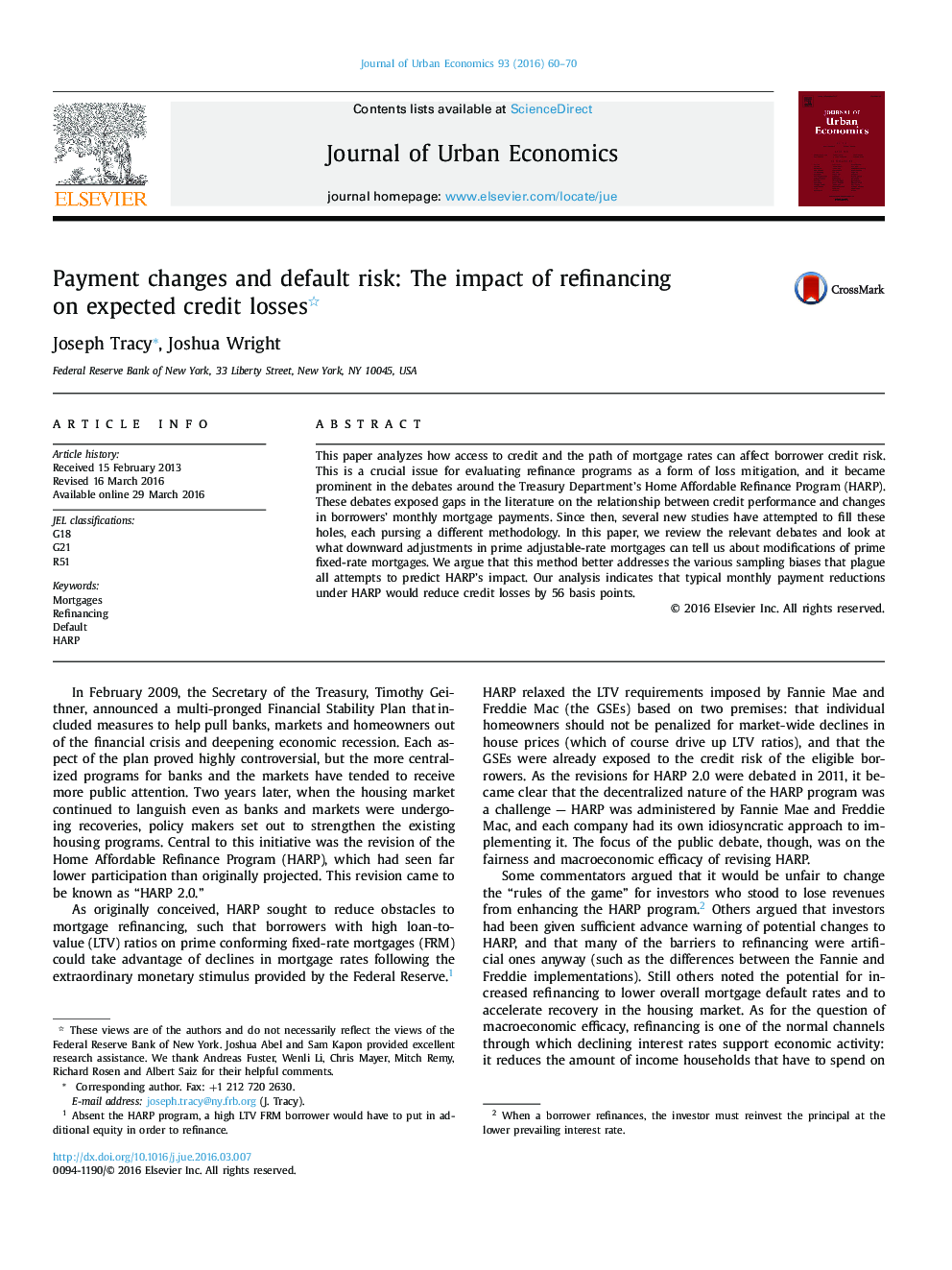| کد مقاله | کد نشریه | سال انتشار | مقاله انگلیسی | نسخه تمام متن |
|---|---|---|---|---|
| 970593 | 1479659 | 2016 | 11 صفحه PDF | دانلود رایگان |
This paper analyzes how access to credit and the path of mortgage rates can affect borrower credit risk. This is a crucial issue for evaluating refinance programs as a form of loss mitigation, and it became prominent in the debates around the Treasury Department's Home Affordable Refinance Program (HARP). These debates exposed gaps in the literature on the relationship between credit performance and changes in borrowers’ monthly mortgage payments. Since then, several new studies have attempted to fill these holes, each pursing a different methodology. In this paper, we review the relevant debates and look at what downward adjustments in prime adjustable-rate mortgages can tell us about modifications of prime fixed-rate mortgages. We argue that this method better addresses the various sampling biases that plague all attempts to predict HARP's impact. Our analysis indicates that typical monthly payment reductions under HARP would reduce credit losses by 56 basis points.
Journal: Journal of Urban Economics - Volume 93, May 2016, Pages 60–70
